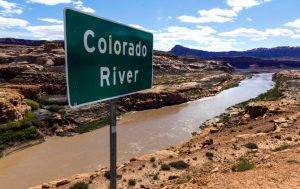
Specialists have published different forecasts of earthquakes of intensity greater than 7 degrees, they anticipate that the next season of telluric movements could start next year.
Different natural phenomena such as the fall of meteorites, tsunamis, volcanic eruptions, droughts, ice ages, forest fires and earthquakes represent a significant threat to human life, economic development and the resources of humanity.
Mexico is a country well known for its seismic activity, especially for events such as those of September 19, 1985 and 2017, which remained in the memory of the entire country due to their intensity and the unquantifiable human and material losses that left his step.
In this sense, earthquake forecasting is one of the most important challenges facing science today, which is essential to minimize human tragedies and economic losses.
Because earthquake occurrence is complex and largely nonlinear, no deterministic model can predict the exact location, magnitude, or timing of a large earthquake.
However, huge amounts of seismic data can now be analyzed that can help specialists better understand earthquakes, anticipate how they will behave, and provide faster and more accurate early warnings with the help of Artificial Intelligence (AI).
“Predicting and forecasting are not the same thing. The second is based on data and statistics about a phenomenon that can occur, but until now it is not possible to say exactly when and where an earthquake will occur,” Víctor Manuel Velasco Herrera, theoretical physicist and researcher at the Institute of Geophysics of the National Autonomous University of Mexico (UNAM).
According to the expert, earthquakes are abrupt processes and therefore it is necessary to analyze them in a special way. “This is done through the identification of patterns by analyzing data from the most intense telluric movements with algorithms.”
In the study in which the specialist participated “Long-Term Forecasting of Strong Earthquakes in North America, South America, Japan, Southern China and Northern India With Machine Learning” South, Japan, South China and North India with machine learning), seismicity in North America, South America, Japan and South China and North India with machine learning was observed by analyzing of seismic patterns of variations for earthquakes with a magnitude of 7 or greater between 1900 and 2021.
The specialist explained that “Although it is true that many artificial intelligence studies try to forecast the magnitude of the next earthquake, in said analysis they were based on the characteristic patterns of each seismic zone that they have analyzed worldwide and in particular in Mexico.” Since in said territory it was found that there is a different pattern from the north of the country to the center and south.
“Since we had the first model in 2017 and we have had the forecasts in Mexico, in Japan, in China, in all of South America and so far all the forecasts that we have published are being fulfilled,” he said.
The Artificial Intelligence model predicted that between one and three strong earthquakes would occur for the 2017-2021 season, with a probability that they would occur in the seismic zone in the south of the country. And actually five happened, including the one on September 7, 2021 in Acapulco, Guerrero of 7.1.
“Until now it has been the last earthquake greater than 7 that has occurred and the next season would start more or less between 2024 and 2026. But like all forecasts, it has a small uncertainty. So we have said that it can start in 2024, but it has an error of plus or minus a year, which means that it could start in 2023. And it could last until 2027. This is, let’s say, the panorama of the forecast that we developed in the UNAM”.
“This work, which has recently been published and has drawn the attention of the main research centers around the world, is a study that has taken us several years. And that puts us at the forefront in that aspect”, he highlighted.
He also said that “Since pre-Hispanic cultures, science and technology were available to, for example, predict when there would be eclipses or the transit of Venus in front of the Sun; and that there were already very precise reports, to such an extent that the best calendar we have is the Mayan one. Thus, historically the country has a history and background in the study of natural phenomena. The challenge was to be on par, with the publication of this study we position ourselves as pioneers at an international level in how to carry out studies and forecasts with a new methodology very different from the one we have”.
On the other hand, in accordance with the National Coordination of Civil Protection of the Ministry of the Interior and the National Center for Disaster Prevention (CENAPRED), it is important that at home with family, school or work, we carry out an Internal Civil Protection plan or Program , and so we know what to do when we are faced with a risk.
In their civil protection manual they state that “An essential aspect of prevention is to ensure the structural safety of the buildings in which we live or in which we carry out most of our daily activities. That is why we must demand that regulations be complied with in the construction of our homes, schools and buildings to which we go and that they have their Internal Civil Protection Program”.
To the extent that we make sure that our constructions are earthquake resistant and we know where the areas of least risk are located, we will all be in safer spaces and in better conditions to face an earthquake.
What to do in case of earthquake
According to SensorGo, a Mexican risk monitoring and prevention systems company, some precautions you can take to minimize the risks associated with earthquakes in Mexico are the following 7:
- Prepare an emergency plan: It must be done first by detecting the risks and designing strategies to reduce them. Evacuation routes should also be identified and drills scheduled.
- Identify the safest places: Whether at home, in offices or in industrial facilities, it is important to identify the safest areas to shelter during earthquakes in Mexico.
- Stay calm: The most important thing during an earthquake is to stay calm. Under situations of stress or panic you will be more susceptible and you will not be able to think clearly.
- Avoid falling objects: When you are trying to protect yourself from the seismic event you should avoid places where there are falling objects and windows.
- Evaluate if you can stay where you are: If at the beginning of the event you consider that you are in a safe place, evaluate if it is possible to stay there.
- Deactivate services: If it is possible for you to immediately sound the earthquake alarm, deactivate water, electricity and gas services.
- Assemble a backpack with the essential elements: What you should take when leaving because of an earthquake.






